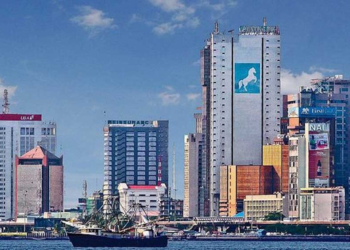A recent report from the AFEX Wet Season Crop Production Report for 2023 has highlighted a significant surge in rice consumption in Nigeria, contributing to a supply gap of approximately two million metric tonnes annually. The report indicates that this surge has resulted in a notable 37 percent increase in the price of rice within the country in the first half of 2023.
According to the report, the demand for rice in Nigeria has consistently outpaced local supply, creating an annual supply gap of around two million metric tonnes. This growing demand aligns closely with the expanding rice market, almost mirroring the annual population growth projection of 2.6 percent at two percent.
The report also reveals that despite Nigeria’s potential to be a net rice exporter, the country has spent over $15 billion in the past decade to meet the increasing demand for rice. This underscores the challenges faced by the nation in achieving self-sufficiency in rice production.
On a global scale, the report notes that rice prices have reached their highest point in nearly 12 years in 2023. Contributing factors include India’s ban on rice exports and the potential impact of El Nino on production in key regions. Rain-induced disruptions and quality variations during Vietnam’s summer-autumn harvest have further compounded the global rise in rice prices.
In Nigeria, the 37 percent year-to-date increase in rice prices is attributed to reduced production in 2022, primarily caused by the effects of flooding during the wet season. The report points to flooding and the ripple effect of international market dynamics as key contributors to the current price surge.
Despite the challenges, the AFEX report anticipates a 4 percent increase in rice production, with a projected further increase in the price of paddy rice by up to around 32 percent. The report highlights a notable surge in the production of milled paddy rice, reaching an estimated output of 5.4 million metric tonnes in 2022, up from 3.9 million metric tonnes in 2015.
While rice cultivation spans all of Nigeria’s agro-ecological zones, the Northwest region stands out, contributing to 72 percent of the total rice production in the country. As the nation grapples with the implications of rising rice prices, there is a growing call for strategic measures to bridge the supply gap, enhance local production, and address the challenges posed by both domestic and global factors affecting rice availability and pricing.










